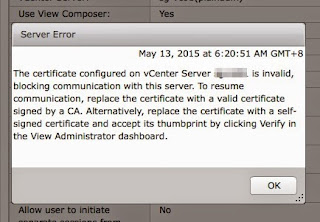Lock In or Not
The term "lock in" has been there for many reasons.
Recently was in a discussion with some customers and this term came about again.
Let's first define "lock in". In the context of IT, "lock in" prevent customers from moving away from an adopted technology, or you call in trapped. Using example of mainframe. Once an application runs mainframe, there is no alternative replacement. The only way to move out is to look for a replacement doing a complete refactor and hoping that data can still be utilised. That also explains, in the early days when mainframe was introduced till date, most are still on it. Also of course not mentioning the reliability and downtime that mainframe provide. At that point in time, there were only less than a handful of mainframe system e.g. IBM, Compaq Tandem, etc. and the technology offered were far beyond any others. At today's context, technology choices of a similar domain are massive. Even though mainframe might be an lock in. It is still customer owned. Customer owned the data.
Next came Unix, where Sun, HP, IBM, etc. came with theirs. Where applications can run on either of these platform, a complete migration is still needed to move off these09. Majority of it got lost along the way. Customers who are impacted will need to migrate off Unix to Linux or change to the rest of the surviving Unix offering. Still data is customer own.
Next came virtualization from VMware and followed by Microsoft, Citrix, Redhat and latest that joins the game, Nutanix. Here you will find tons of tools to migrate off VMware but hardly any for other vendors.
Question: Would a "lock in " platform has more tools to migrate off it or less?
Then came the public cloud service providers (CSPs) each providing their common and unique set of tools and services. Attracting the user to adopt their native services by providing easy to use onboarding tools and/or free trainings. The next thing you realize, is when cost or policy guideline requires you to move elsewhere, you maybe unable to due to the proprietary service that belongs to one provider and not another. The fast to consume might just got you trapped. If the cost were to increase by multiple folds, what would you do? Getting adopting a technology does not put away the fundamental planning for exist. In the on premise design, we often have a disaster recovery site for that. What have you got in a Cloud Service Provider other than the Available Zones, how can you move easily to another CSP or back on premises if a call for such requirement is needed?
Question: What would be your exit strategy?
The IT industry and technology is fast scaling and when coming to adopt and assess technology to use, often we left out the importance. As not to repeat history itself, customers have to properly perform their assessment whether a technology has a replacement or ease to migrate off when needed due to any policy changes, requirement, etc. Such as when using cloud native services, we would consider if the same service or any open source favour of it is available in other provider so as not to lock one self in to one.
Some customers, started to build their own API gateway to layer on top of these cloud service providers so that there is no need to customize to one native cloud service provider API and build another for another CSP.
How easy to migrate off one platform to the next? What tools are available for migration? Perhaps a closed system would have little to no tools which resulted in the "lock in". Where an open platform would have tons of tools to help migrate you off. This can be one of your assessment criteria.
What can be an ideal solution architect?
Can we leverage on a common platform in every CSP and leverage on the PaaS and SaaS that they provide? When there is a need to move around CSPs, this will not be a show stopper but only consuming the PaaS and SaaS from the different CSPs that provide the same services.
Some thoughts: Who is the real retailer, banks, etc.?
Imagine if every industry workload is lock in to a single platform. Just like how applications that runs on Mainframe is today. Except now customer own the data, but the provider also owned the assets. Ever wonder, who is the real industry owners by then. Are the banks still the banks? The government still the governments? The retailers still the retailers? Or are they owned by someone now. If you ever thought of it, why would cloud providers so willing to invest millions of dollars even without any return of interest? Is the return that good eventually?
Disclaimer: All product names are used for illustration purpose



Comments